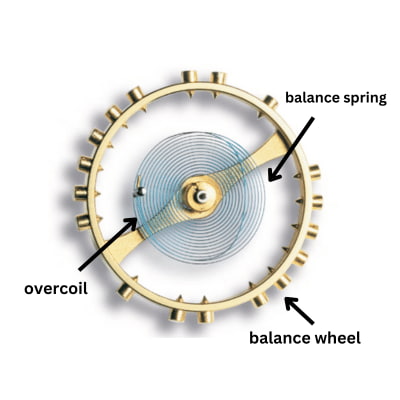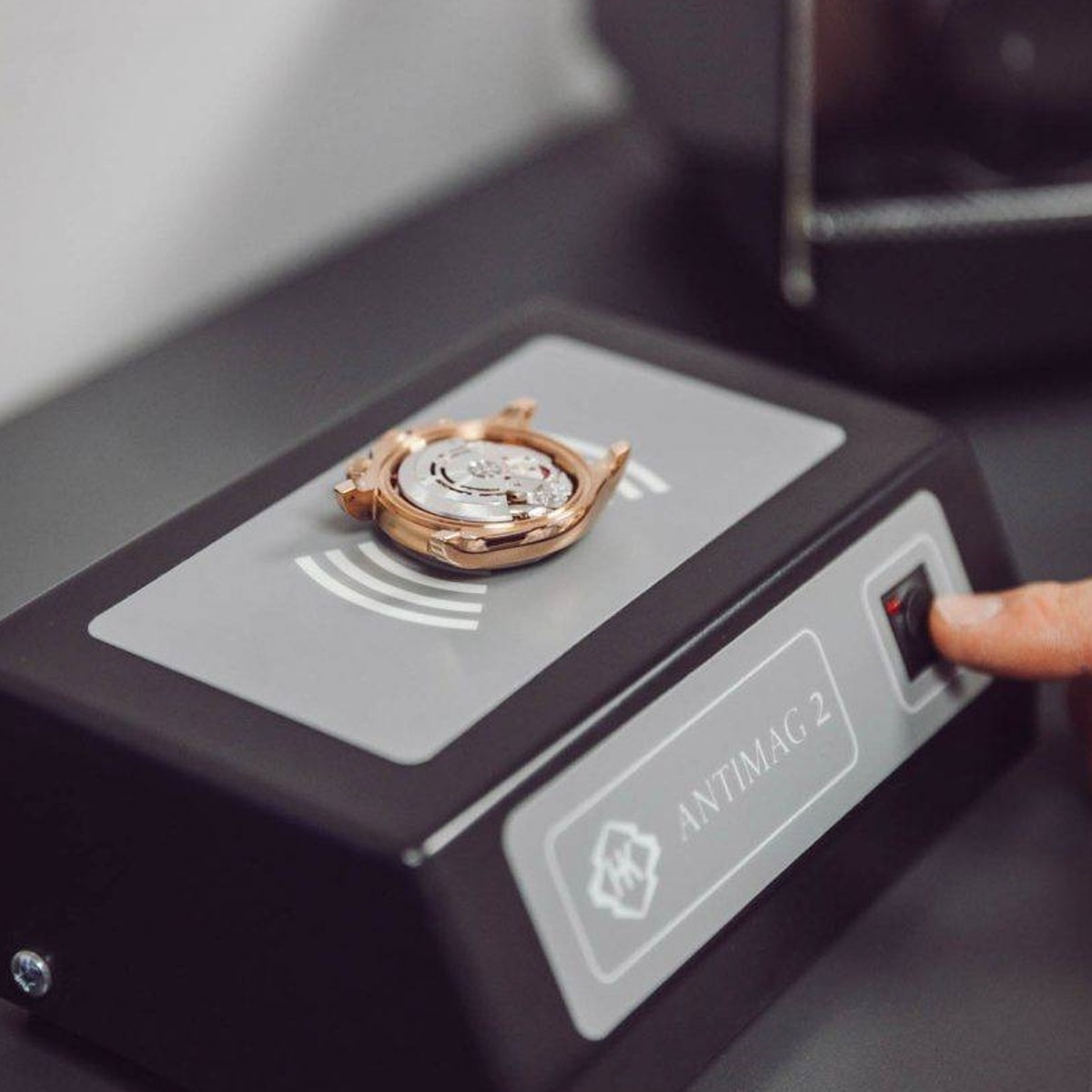[ TECH ] The Hidden Influence: How Magnetism Affects the Main Balance in a Watch
In the world of horology, precision is paramount. Mechanical watches are intricate systems of energy transfer and regulation, and the heart of this mechanism lies in the balance wheel and hairspring assembly. While temperature and physical shock are known disruptors, magnetism is a subtler, often invisible adversary that can significantly distort timekeeping. In this article, we explore how magnetic fields interfere with a watch’s regulating system, using principles of classical electromagnetism and material physics.
What is the Main Balance in a Watch?
The balance wheel and hairspring (also known as the balance spring) function as the harmonic oscillator of a mechanical watch. The hairspring provides a restoring torque that keeps the balance wheel oscillating at a defined angular frequency, typically between 2.5 Hz and 5 Hz (18,000–36,000 vph).
The timekeeping precision of this system relies on Hooke’s Law:
F = -kx
Where:
- F is the restoring force,
- k is the spring constant,
- x is the displacement from equilibrium.
In an ideal system, the hairspring behaves linearly, and the period of oscillation remains constant. However, external magnetic fields can distort this equilibrium by changing the spring’s behavior.
 (image from https://www.jewelsbylove.com/)
(image from https://www.jewelsbylove.com/)
How Magnetism Enters the Equation
Magnetic fields, denoted B and measured in teslas (T) or gauss (1 T = 10,000 G), are generated by everyday devices: smartphones, speakers, MRI machines, and even bag clasps. These fields can induce magnetization in ferromagnetic materials commonly used in traditional watch hairsprings (e.g., Nivarox alloys).
Relevant Physics: Magnetic Permeability (μ)
Materials with high magnetic permeability (μ) tend to concentrate magnetic field lines. The hairspring, made from steel or other ferrous alloys, has high μ, which means even small fields can magnetize it. Once magnetized, the hairspring’s coils can attract each other.
This attraction shortens the effective length of the spring, increasing the oscillation frequency and making the watch run fast.
Faraday’s and Lorentz’s Laws in Context
Faraday’s Law of Induction states:
ε = -dΦ/dt
Where:
- ε is the induced electromotive force,
- Φ is the magnetic flux.
If the balance spring moves through a time-varying magnetic field (as in electronic environments), eddy currents can be generated, producing Lorentz forces:
F = q(E + v × B)
While mechanical watches aren’t electrically active systems, this law explains why motion in magnetic fields can induce forces that affect metallic components on a micro-scale.
Symptoms of Magnetization
Signs your mechanical watch has been magnetized include:
- Running significantly fast (gaining several minutes per day)
- Irregular or erratic timing
- Stoppages without mechanical failure
- Compass deflection test: If a compass needle reacts to your watch, magnetism may be present

Demagnetizing a Watch
The solution lies in using a demagnetizer, which emits a rapidly alternating magnetic field. This process relies on magnetic hysteresis and effectively brings the net magnetic field in the component to near zero.
 (image from https://www.watch-tools.de/)
(image from https://www.watch-tools.de/)
Alternatively, watches with anti-magnetic components—like silicon hairsprings—avoid the problem altogether, since silicon is a diamagnetic material with negligible interaction with magnetic fields.
Anti-Magnetic Standards and Innovations
To counteract magnetic interference, the watchmaking industry adheres to stringent anti-magnetic standards and has developed innovative materials:
- ISO 764 Standard: Requires that a watch maintains accuracy after exposure to 60 gauss (≈ 0.006 T).
- OMEGA’s Master Chronometer Certification: Ensures resistance to magnetic fields up to 15,000 gauss (1.5 T) using silicon hairsprings and non-ferrous alloys.
- Rolex Parachrom Hairspring: Made from niobium-zirconium alloy, this spring is paramagnetic and thermally stable.
 (image from https://www.uhrenkosmos.com/)
(image from https://www.uhrenkosmos.com/)
Protecting Your Watch
Even with advancements, it’s best to minimize exposure to high magnetic fields. Common sources include:
- Loudspeakers
- Magnetic phone cases
- Laptop charging stations
- Induction cooktops
- Airport x-ray and security scanners
Conclusion
Magnetism is a formidable but often overlooked force affecting the delicate oscillations of a mechanical watch. Grounded in the principles of classical physics, its effects on materials and motion can drastically alter timekeeping. Fortunately, horological engineering has responded with both material science and design innovation. By understanding the physics at play, we can better protect and appreciate the fine art of mechanical watchmaking.